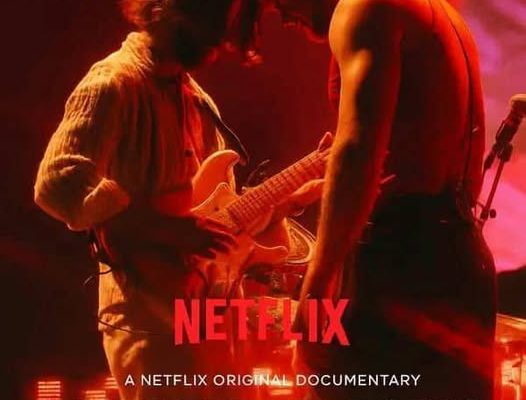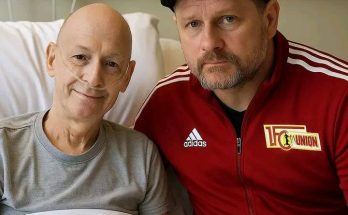From a dusty rehearsal room in Las Vegas to stadiums filled with tens of thousands of voices, the story of Imagine Dragons is one of grit, persistence, reinvention, and ultimately revolution. Netflix pulls back the curtain on this remarkable journey: how a band of under-the-radar musicians became transformative figures in modern music, and how their anthems came to define a generation.
It begins with the early days. Before the lights, before the tours, before the platinum records, there were humble ambitions. Lead singer Dan Reynolds grew up in Utah, steeped in faith, roots and longing. He met fellow musicians Wayne Sermon, Ben McKee and Daniel Platzman. The band coalesced not in the glamorous music capitals of New York or Los Angeles but through the grit of small venues, local competitions, and self-funded demos. As various sources note, the band formed out of Provo, Utah and eventually relocated to Las Vegas to record their early EPs. In those early rooms, the band defined their sound—an intriguing hybrid of rock’s fervour, folk’s authenticity and electronica’s expansive textures. They wrestled with identity: What is rock in an era of pop and streaming? How do you stand out?
Netflix shows this early period with actual home-video footage: sweaty rehearsals, cramped apartments, dream-filled evenings. The band plays for small crowds—maybe 50 or 100 people. The camera follows Dan as he questions whether his voice even matters. He doubts the songs. He wonders if they’ll ever have an audience beyond their own friends. This part of the story speaks to anyone who’s ever struggled to be heard. It’s the seed of a narrative of transformation.
Then comes the breakthrough. The band releases their first major label album, Night Visions, and the single “Radioactive” explodes into the airwaves. As the documentary shows, this moment does not arrive out of nowhere. It is born from years of incremental steps: songwriting midnight to dawn, touring small towns, countless rejections. The film rebuilds the moment in slow-motion: Dan’s voice germinating into that iconic howl, the beat dropping, the world awakening to a new kind of rock anthem. According to band data, “Radioactive” became one of their signature hits and helped cement their global profile. Netflix emphasizes this turning point: the band is no longer playing to 100 people but to thousands; their faces are on billboards; social media is ablaze. The narrative becomes: this band didn’t simply achieve success—they shifted something.
What is fascinating—and what Netflix explores in depth—is how Imagine Dragons didn’t merely ride the wave, but invented a new one. They merged rock ethos with pop sensibility, electronic rhythms and anthemic choruses. Their music was big in the arenas but still carried emotional depth. “Believer,” “Thunder,” “Whatever It Takes” became not just songs but communal experiences—moments for fans to scream into the night, to feel understood, to feel empowered. As one summary of the band puts it: they boast a string of chart-topping hits and billions of streams. Netflix frames their impact: by the mid-2010s, imagine this: while rock music had been languishing in the mainstream, these four musicians reignited its spark. They became modern icons. Not by clinging to the past, but by redefining what rock could be.
Yet with triumph came turbulence. The documentary does not gloss over the high cost of success. Dan Reynolds’s personal journey takes centre stage. He opens up about his battles: the weight of expectation, the exhaustion of touring, the layered burdens of identity and faith, personal health issues. Reports note his candour regarding mental health, and chronic health conditions such as ankylosing spondylitis that once threatened his ability to perform. (Aesplora – Where Legit Lives) Netflix captures these moments in quiet rooms: away from the screaming fans, away from the pyrotechnics, Dan sits with his thoughts. He questions: Can I keep doing this? Is the voice inside still the same as the one that arrived in Las Vegas with nothing but a dream? The bandmates weigh in: touring is relentless. The camaraderie is strong but fragile. The songwriters wrestle with introspection and expectation. They are no longer simply making music—they are warding off the dangers that come with making music for millions.
And so the film turns to activism. Imagine Dragons didn’t just climb rock’s mountaintop—they turned around and used that vantage point to look outward. Through Dan’s founding of the LOVELOUD Foundation and other ventures, the documentary explores how the band leveraged their platform for LGBTQ+ youth, mental health awareness, and global humanitarian efforts. One profile notes: “He’s a cultural force… used his platform to push for greater inclusivity and acceptance.” (diamondsport) Netflix shows archive footage of benefit concerts, fan-meetups, and the quieter phone calls where Dan says, “I want our voice to mean something.” The narrative becomes more than music—it becomes purpose.
One of the most compelling aspects of the story as portrayed here is the creative evolution. The band didn’t rest on the success of “Radioactive.” They kept experimenting. They released Evolve, Origins, and so on. Their sound matured; the band matured. According to public data, albums like Evolve and Origins continued their streak of success. (Wikipedia) Netflix tracks this arc: studio sessions where the band debates direction (“Do we stay rock? Do we go pop? Do we experiment?”). They show early demos, raw tracks, the friction of creative unity. This segment helps viewers understand: success is not a destination—it signals a fresh set of questions. For Imagine Dragons, the question became: “How do we keep relevance while staying true to ourselves?”
And therein lies the heart of the untold story: the balancing act between the global and the intimate, the spectacle and the soul. Netflix dramatizes this by juxtaposing footage of sold-out arenas with intimate moments: Dan reading letters from fans, Wayne writing guitar lines in solitary hotel rooms, Ben meditating after a show, Daniel staring at drum sets in the early morning hours. These are the threads that connect their fame with their humanity.
By the time we reach the peak of the narrative, the stakes have shifted. The band performs at major festivals, their songs become global anthems, their streaming numbers are astronomical. One historic note: they are the only band to have four RIAA Diamond singles. Netflix uses this to illustrate not just success but cultural saturation: their music is everywhere—ads, movies, games, sports events. But the film also asks: “What happens when your own voice becomes a brand? When the audience expects the anthem, does the artist still feel free?” It is an existential question: what is legacy?
In this tension lies a turning point: the band begins to reflect. The documentary abandons linear buoyancy and digs into what comes after the rush of “We made it.” Dan visits his old neighbourhood, the places that inspired early songs. The band sits in a studio, not recording a hit single but just jamming, trying to remember why they started. One review of the documentary notes this: “The band returns to their roots in Las Vegas… a sense of coming full circle, of realizing that even after conquering the world, home remains the foundation.” (globalnews247.co.uk) These sequences are among the most emotional. They reveal vulnerability: time has passed; nothing is guaranteed. The audience is invited not just to watch triumph but to witness uncertainty.
Then comes the legacy question: how has Imagine Dragons revolutionized modern music? Netflix presents it in measurable terms and cultural ones. Measurably: billions of streams, chart-topping global records, sold-out tours across continents. Culturally: they reintroduced rock to the mainstream in a new form; they connected with a generation hungry for authenticity; they blended genres; they created stadium-sized soundscapes that nevertheless felt personal. Industry insiders featured in the film describe them as “ushering in a new era of rock-pop hybrids that speak to global youth.” The band’s influence ripples through other artists. The documentary suggests that if you turn on the radio in 2025 and hear rock-tinged anthems, you might be hearing the legacy of Imagine Dragons.
Perhaps the most powerful thread is what this story says about hope and resilience. Netflix doesn’t depict the band as flawless. On the contrary: there are moments of doubt, failure, confusion. That is why the story resonates. Dan at one point asks: “Was I singing for them, or for me?” The documentary doesn’t entirely answer—but it shows the journey. It shows Dan recovering from illness, stepping off stage, recalibrating; it shows the band listening to their own fans and realising what their music means to people. Reddit fans testify: > “They definitely did… they’ve always inspired me, made me feel alive.” (Reddit) The viewer sees that the band didn’t just give fans songs—they gave them refuge, catharsis, a mirror.
Finally, the documentary ends not with a finish line, but with a horizon. The closing scenes: the band walks on to a new tour stage; lights rise; the crowd roars; yet backstage, Dan checks his phone, reads a letter from a fan in Nigeria, or from Lagos, or from Uyo—places the band used to only dream of. The voice-over says: the journey is never over. Their music lives inside people. That is their true revolution.
In the closing sequence, Netflix revisits the beginning: the rehearsal room, the small crowd, the dreams. Dan picks up his guitar, strums a line. The camera lingers on his face. Then we fade to the stadium. The music builds. The chorus erupts. The crowd sings back. And we realize: this band didn’t just become successful—they changed something for all of us.



